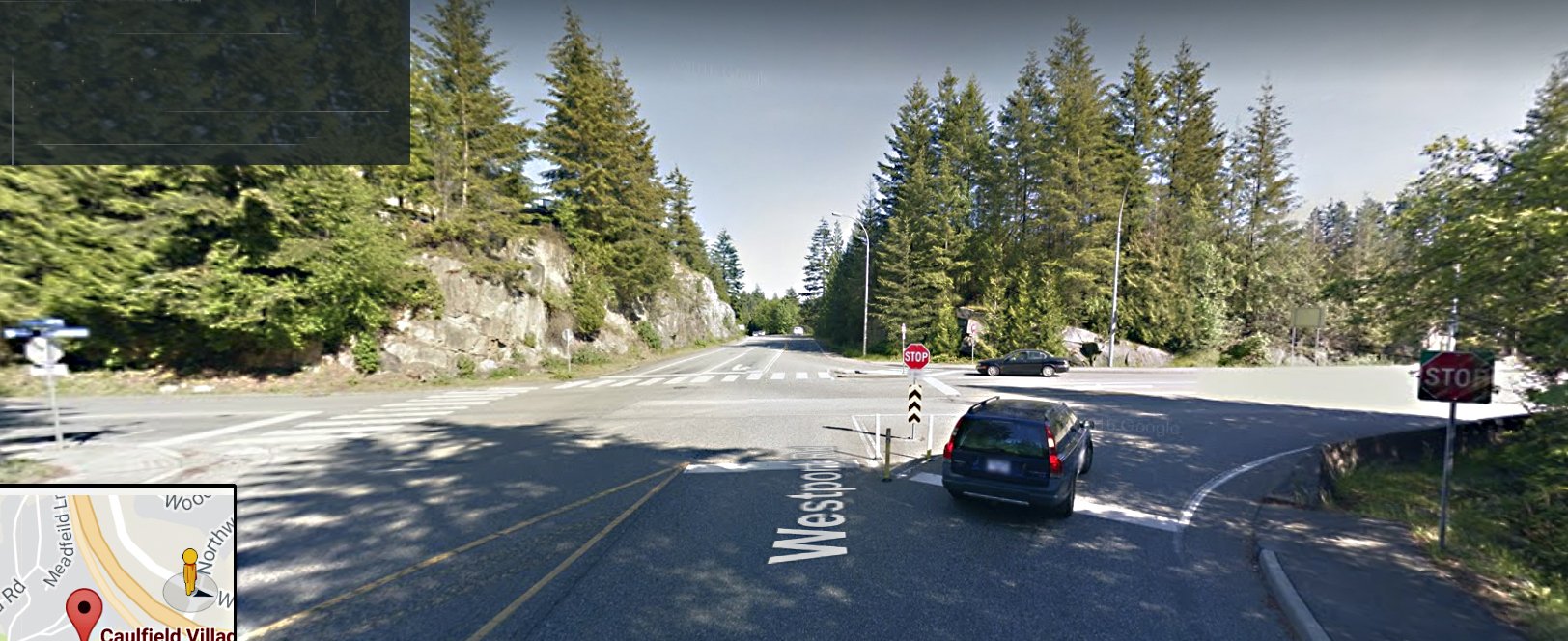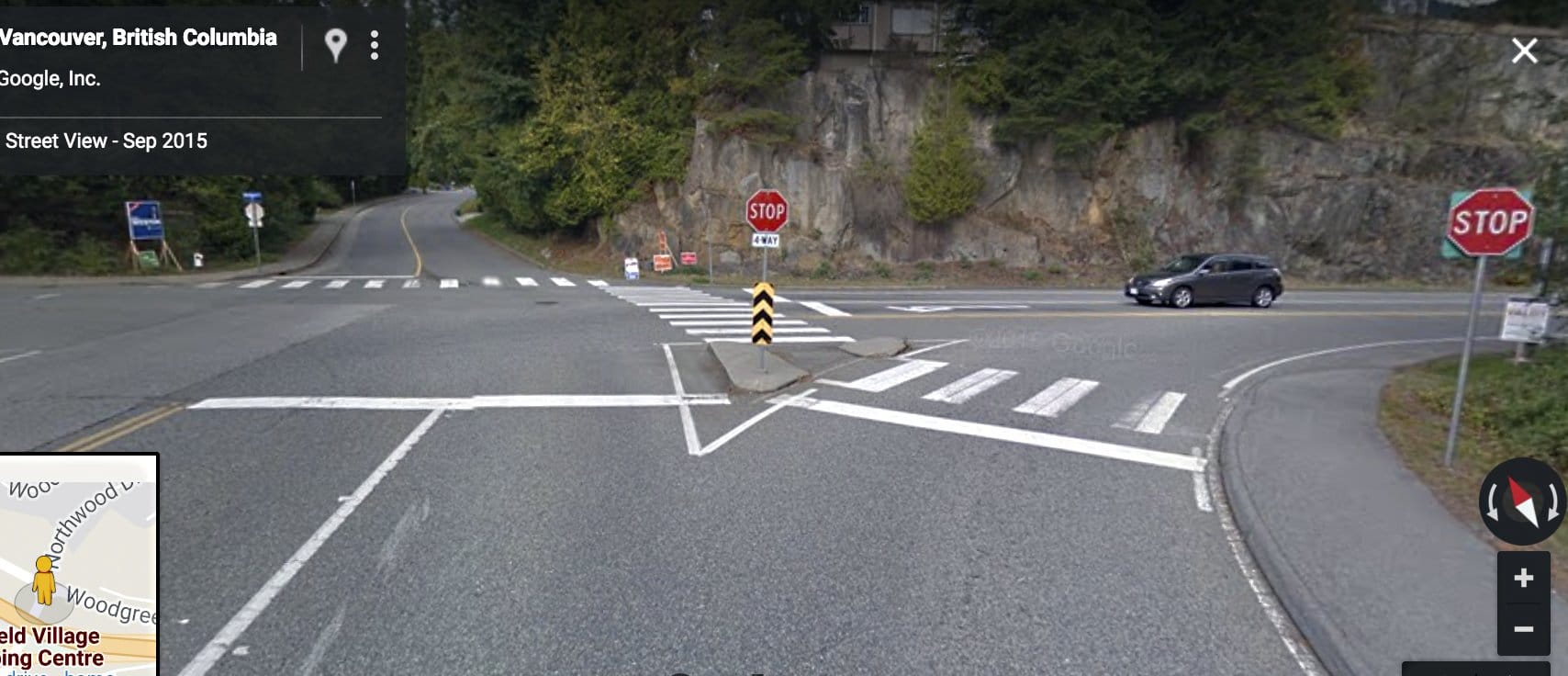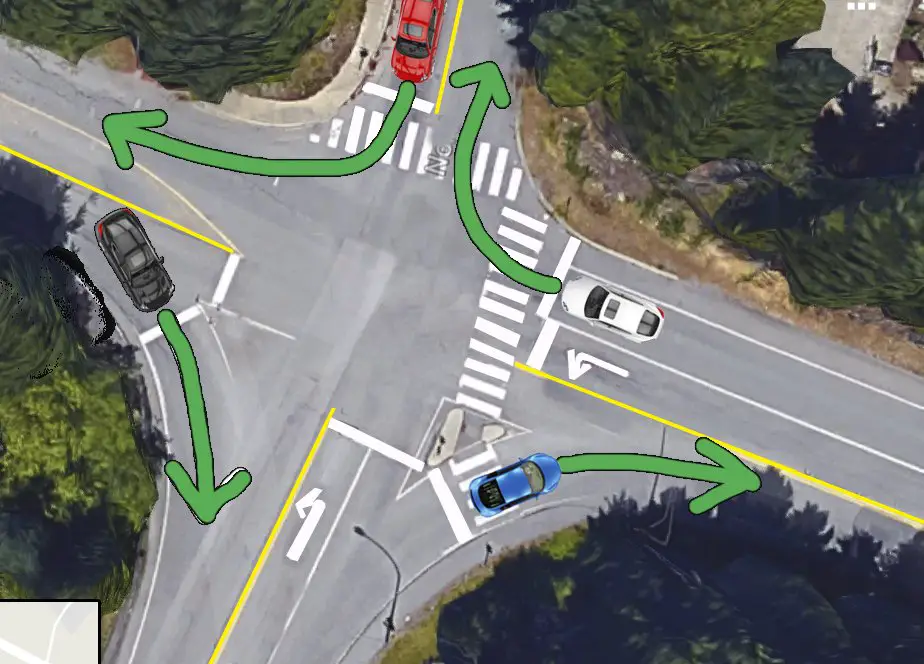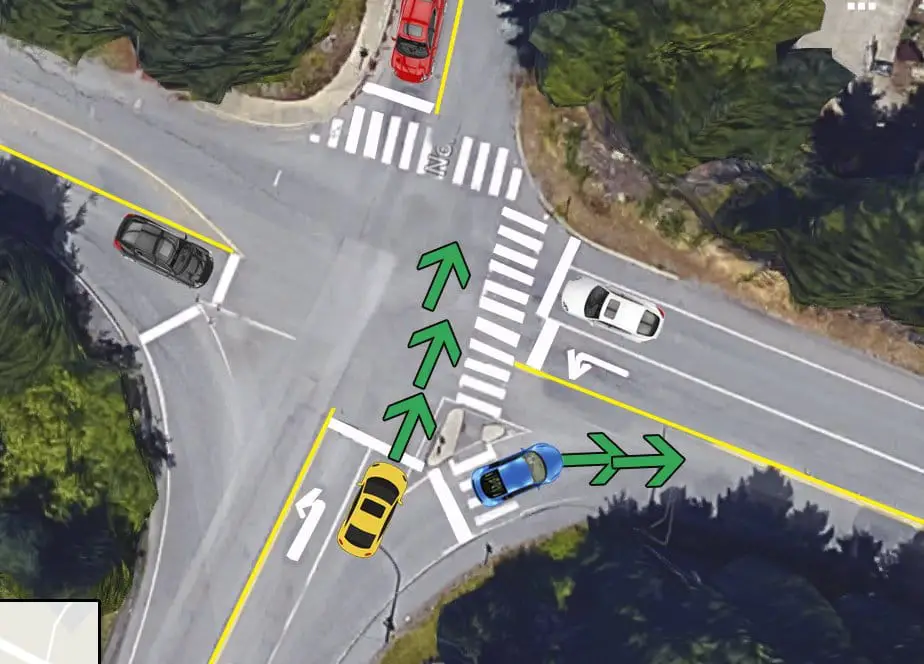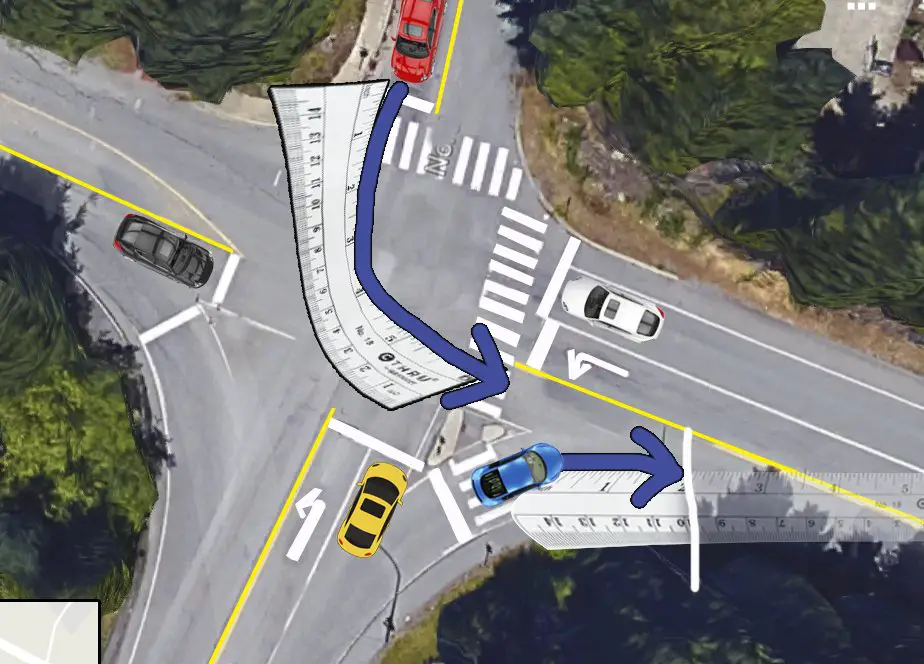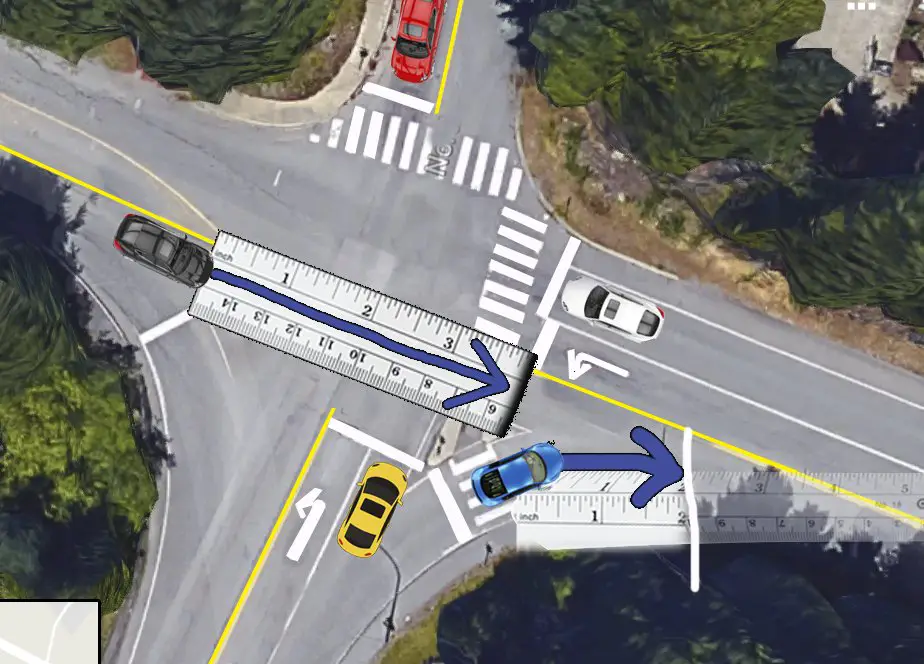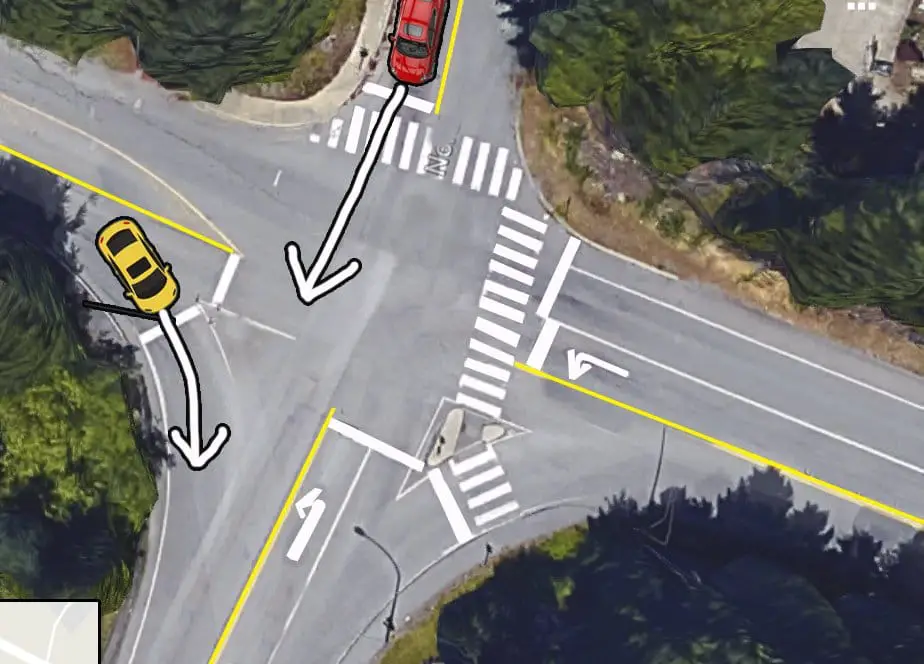Question on Caulfield Exit 4-way-stop
There is an intersection in my neighborhood that causes a lot of confusion [Caulfield exit 4-way-stop in beautiful West Vancouver]. It is a 4-way stop (4-way sign under stop sign) but it has 2 pull-out lanes for right turns (each with another stop sign but no 4-way sign under them) as well as 2 left turn lanes.
I would appreciate some clarification on this since I have young drivers that I would like to educate on the proper use of this intersection.
If I am approaching the intersection and using one of the right turn lanes do I have to wait until the entire intersection is cleared before I get the right of way (I could be here all day since it’s a busy one) or do I proceed with right of way in order of cars approaching the intersection as an ALL WAY stop situation?
The lanes are as follows from the north side of the intersection:
- There is 1 lane to go south and 1 lane going north (2 lanes only from the north)
- From the south, there is a right turn lane (with a separate stop sign) and a lane to go north, and a left (west) turn lane (3 lanes from the south)
- From the east, there is one lane to go west (straight) and a left-south turn lane as well as a lane going east (3 lanes from the east)
- From the west, there is a right turn separate lane (with a stop sign) and a lane to go east as well as a lane going west (3 lanes)
- In total there are 11 lanes at this intersection
- Can you help me with this?
I agree this is not the easiest ‘4-way stop’ intersection I have ever seen
I have some thoughts and opinions on this. These are just my thoughts and opinions. Please, nobody sue me. P.S. I really don’t know the answer. But I can ramble on about it for a while as usual.
I would say that drivers facing the regular or ‘non-4-way-stop’ sign, should treat this just like they would any other stop sign, since that is exactly what it is; a regular ole stop sign…
So we stop completely, yield to any pedestrians, and then if necessary, inch the vehicle forward slowly if visibility is blocked and/or if not necessary to inch forward, simply proceed when safe and only when safe.
You don’t really get a scheduled ‘turn’ to go per se, (thank goodness too because I am not sure how to teach 11-way stop procedures :lol: ) so your job is to figure out who is going where, and when you can safely go.
Simple example: If there are 3 other cars at the intersection and they are all turning right, then there’s no conflict; you can all proceed at the same time if you know for sure the other cars are actually going to turn.
*I apologize I placed my blue car stopped on top of the crosswalk. I’m not sure that the whole rolling forward business would be necessary here and usually, we would try to avoid stopping on the crosswalks whenever possible. Though sometimes you have to.
I know that may not happen too often here but you get what I mean. When you’re turning right you need to know who you need to worry about – other vehicles going straight or turning left, not vehicles turning to their right. If possible, while you are approaching, try to get a general idea of which order the other cars might be proceeding in.
The other thing to make sure new drivers are aware of is not to trust the turn signals of the other vehicles. If it has a turn signal flashing, this doesn’t mean the car will actually turn. Or sometimes it has no signal and it turns. So don’t move before you are sure it is 110% safe.
But by all means, if you stop and you see a safe gap, then go for it. Otherwise, you are right, you might be there all day. and we all know you got in your car to like.. go places.
At the very least, dare I say you should be able to go at the same time as the car relative beside you, at the 4-way stop, if there is one there that is going to continue straight ahead? *Unless for some reason your speeds are remarkably different? At that moment, it would be almost impossible to have a conflict/collision with any other vehicle at the intersection.. would it not?
That might not work if it went left, however, as opposing left turns might move simultaneously.
And you can’t always be positive about where the car is going.
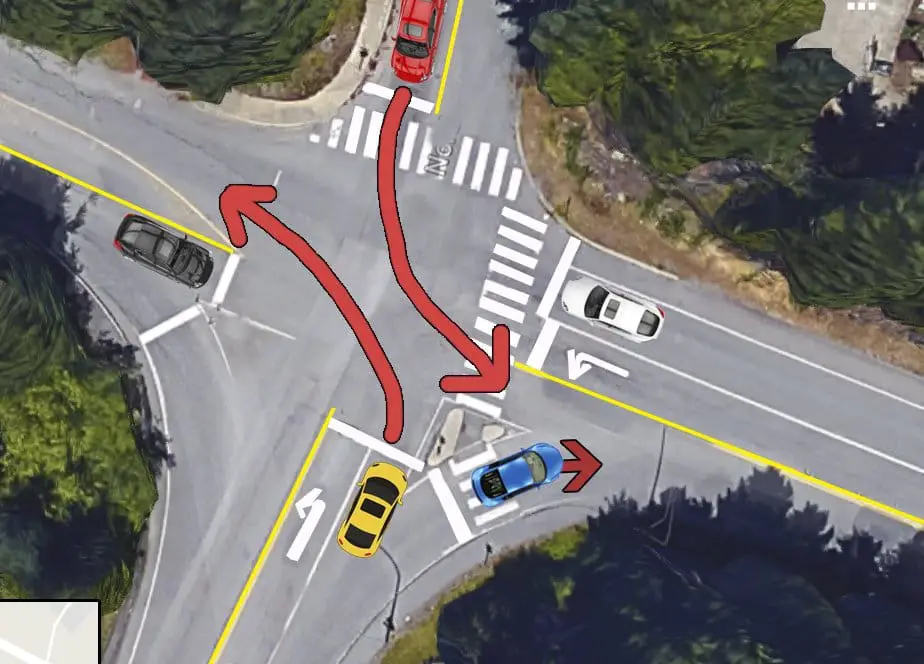
But also, Think about how far the left turn vehicle has to travel before it will have a conflict with you.
And how far would you have to travel to get out of its way before it gets there?
And how long does all of that take?
See how naturally it has to travel about 6 not-to-scale, disproportionate warped inches before it gets to you.
And you only have to travel about 2 not-to-scale, disproportionate warped inches before you are traveling down the road in front of it.
This is a rather large intersection for a 4-way stop. Could you even turn at the exact same time and not have a conflict? This is something to consider.
The car going straight has to travel across the entire intersection before it will have a conflict with you. How long does that take? How long does it take you to drive your about 2 not-to-scale, disproportionate warped inches?
I’m not saying to just cut people off in the middle of their turn and just go whenever you want. But if they are hesitating even for a few moments, could you fit in then?
We do want to communicate with each other here but we don’t want to use our hands to wave each other through as if a collision happened the one(s) who waved may be found partially liable.
But we can communicate in other ways such as eye contact; slow movement would indicate an intention to go; or a complete lack of movement may signal another driver you’d like them to go first.
Some people flash their high beams quickly as a way to signal someone else to go first. I’m not sure that is a good idea here where there are so many different road users who could be confused as to who that signal is for and what it means.
Am I making any sense!?
I guess the question is if one driver has a 4-way stop sign and one has a regular stop sign, does one have a right of way over the other. These two, for example:
To me, it would make sense to yield to the right if they stopped at the same time since that’s what we usually do, and that would be efficient (These two can go at the same time and not have a conflict). Of course, it gets much more complicated than that. I am not sure there’s a non-complicated answer
If anyone else can explain this better, please do.

